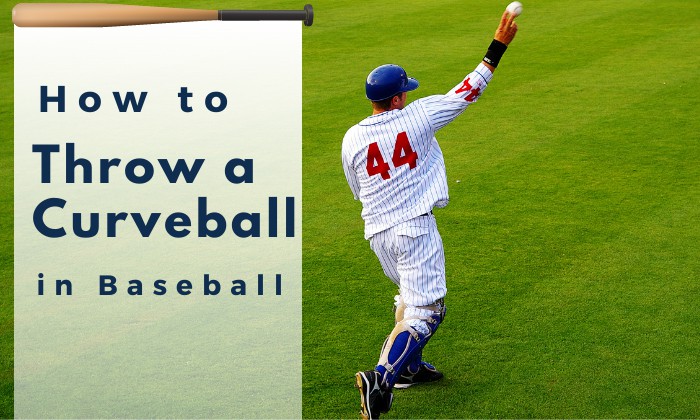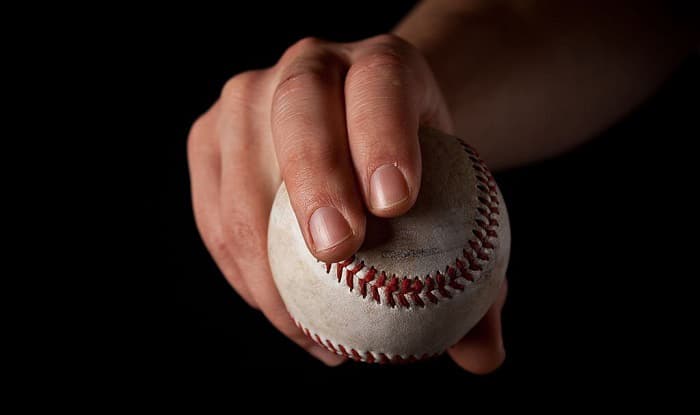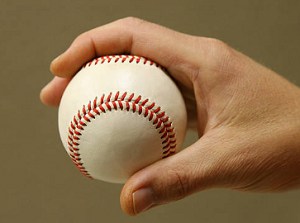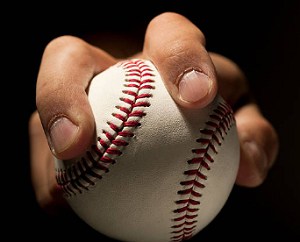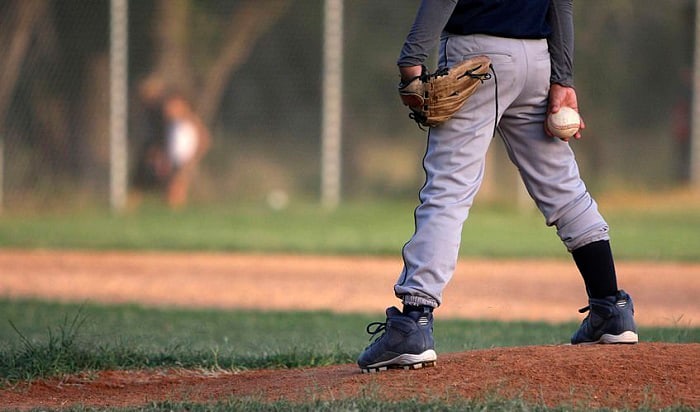A curveball is among the most deceptive pitches in softball and baseball. It throws batters off guard with its characteristic break, just a split second before the ball enters the strike zone. As a result, hitters often miss a curveball.
Knowing how to throw a curveball in baseball is a must for every professional pitcher. This article will define this pitch in detail and demonstrate how to properly throw a curveball in three easy steps.
Contents
What to Prepare
No special equipment is required when learning to pitch a curveball. All you need are the following:
- Resistance bands for warm-ups
- A baseball
- A vast indoor or empty outdoor space
How to Warm Up
Besides the usual whole-body stretch required before any exercise or physical activity, you need to warm up your throwing arm for some intense work. Resistance bands are a great way to improve your pitching velocity and strengthen your arm muscles for all the heavy throwing.
Long tosses are also recommended to prep up the shoulders and back muscles. Throw the ball as far as you can, but be sure to do this lightly so you don’t tire yourself out early.
Grip-throw-release: Throwing a Curveball in 3 Easy Steps
Step 1: Find the proper grip.
- As seen in the image below, position your middle and index fingers over the ball with the seams in between.
- Place your thumb directly beneath one seam and fold the ring and pinky fingers so that their tips rest on your palm.
- Your hand should curve over the ball, with the horseshoe seam pointing toward your palm when viewed from the top.
Step 2: Establish your throwing motion and find your release point.
- Find your release point with the same arm motion used to throw a fastball.
- Ensure that your elbow is at a 90-degree angle and higher than your shoulder just before you release the ball.
- The point of a curveball is deception. Your release point should be the same for all pitches, so hitters cannot tell what type of pitch is coming their way.
Step 3: Release the ball with a snap.
- Exert downward pressure on the seam with your middle finger. At the same time, apply upward pressure with your thumb to create the perfect topspin.
- Throw the ball and rotate the wrist at the release point.
- Wind up and follow through as you would a fastball. Snapping the wrist at the release point will take care of the downward trajectory as the ball closes on the hitter.
What is a Curveball?
Breaking ball pitches like the curveball are great for anyone looking to build a nasty pitching arsenal. From the term alone, it is easy to understand that a curveball is a ball that curves when you throw it.
Unlike the more popular fastball, the curveball does not travel in a straight line. Instead, pitchers are able to create a spin that lets the ball break and dive downward as it approaches the home plate by holding and releasing the ball in a specific way.
A curveball is one of the most difficult pitches to hit. Because of the complex movements required in its delivery, it is considered an advanced pitch type that is not recommended for beginners or young baseball players.
Different Curveball Grips
It may seem that there are different ways to grip a curveball, but upon close examination, they’re all pretty much the same, except for the index finger placement. Besides, the break associated with a curveball relies more on wrist movement rather than the grip.
Let’s take a look at these curveball grip variations for both right handed and left handed pitchers:
- Standard grip – index and middle fingers are positioned side by side parallel to the upper seam of the ball
- Crossover grip – index finger is positioned over the middle finger
- Pointer or index-up grip – index finger is pointed upward and is next to the middle finger
- Fingernail grip – index finger is bent with the fingertip resting on the leather to provide some support; middle finger is next to the index finger, though its tip are slight farther forward
- Knuckle curve grip – index finger is folded with the knuckle resting on the leather for a tighter grip
Whether you prefer a standard grip or opt to throw a knuckleball curve, variations in curveball grips all boil down to ease of delivery. The most suitable grip is that which is most comfortable for the pitcher.
FAQs
Why do so many young pitchers throw poor curves?
Throwing a curveball creates torque on the wrist and elbow, which can be too extreme for young pitchers whose tendons and cartilage aren’t fully developed yet. Furthermore, youth players do not fully understand the range of motion required to throw these more advanced types of pitches.
For this reason, curveballs are best restricted to junior and adult pitchers. Young pitchers below 13 years old are more at risk of chronic wrist and arm injury if they start throwing curveballs too early.
What is the Magnus effect in a curveball?
In a range of sports, including baseball, the Magnus effect is a phenomenon that causes a ball to curve when struck or released with a spin. A spinning ball creates both high and low pressure on opposite ends, resulting in a pressure difference that drives the ball toward the low-pressure area.
As a result, a topspin will cause the ball to curve downwards, while a backspin will drive the ball in an upward direction. Players can also create this curving motion with a tennis ball, a basketball, a golf ball, and a soccer ball.
Will a curve break differently based on speed?
Speed can affect how a curveball breaks, but the velocity causes the ball to break differently. Speed is simply how fast the ball travels, while velocity is how fast it travels because of the spin generated by the grip and throwing motion.
For this reason, the spin rate is more important when throwing a curveball. The faster the ball spins, the more it curves and breaks as it approaches the strike zone.
Which curveball grips is the best?
There is no best way to grip a curveball. What works for one pitcher doesn’t necessarily work for all. Choose the most comfortable grip that maximizes your spin rate and delivers superior speed for the perfect break.
Is a curveball or slider better?
A slider works better at deception. Because it is thrown harder than a curveball, it mimics a fastball until the final split second, when it breaks sideways. The downside is that pitchers subject themselves to the highest level of arm stress (54.92 N·m) when they throw a slider.
A curveball is better than a slider in terms of pitching-related injury. That is because it has the lowest arm stress level among all breaking balls (47.55 N·m). Arm stress level is 50.69 when you throw a fastball and 51.72 when you throw a changeup in baseball.
How do I improve my curveball?
You can learn the proper way to throw a curveball with just an empty water bottle.
Start by gripping the top of the bottle the same way you hold a curveball. The movements for throwing it isn’t much different from the steps we described above. The bottle should tumble in a top-to-bottom manner.
If the bottle spins side-to-side, you’re not doing it correctly.
Conclusion
Much has been said about how pitchers control the outcome of a baseball game with their throws. One of the most successful tactics they employ is the curveball.
A curveball is a fantastic pitch to add to your throwing arsenal. It deceives the batter into thinking you’re merely throwing a straight fastball and makes a last-minute dive just as it enters the strike zone.
We hope you found this article helpful in learning how to throw a curveball in baseball. Feel free to share this step-by-step guide with your fellow baseball enthusiasts.

A powerful swing and the ball is flying across the field, just one hit, and we might never forget the thrill it brings. I do not know about you, but I never do. Every baseball game is the chance to compete with others and cooperate with your teammate. It is among my biggest passions.



